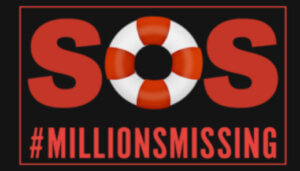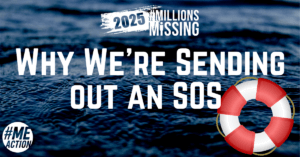Timbre Livesay and Mary Dimmock contributed to this article.
This is an outline of the steps a California ME advocate, Mark Camenzind, took for getting city proclamations for ME. Below the steps is a template you can use for your own city proclamation. Feel free to adapt either for your city’s needs.
As this is just a brief outline, consider also looking at the more detailed steps Georgia advocates took to get a State Resolution for ME. Read the case study here. Although the players might be different – one city mayor versus many state legislators – the Georgia document could inform your city level strategy. Also, the Georgia document contains a template for a State Resolution for ME, which is more detailed than the city proclamation template in this document. For your city proclamation, feel free to use language from either the state or city templates.
In 2016, Mark Camenzind got ME proclamations for his hometown and other cities, even big cities where he does not reside (Los Angeles, CA, and Phoenix, AZ). Mark modeled his work after Harvey Keith Carden, a neuroimmune and May 12th advocate who has gotten proclamations as well as city halls, such as in Houston, TX, to light up in blue for May 12th.
Lighting a city hall blue is another great way to raise awareness, so you could also try that approach instead of, or in addition to, the City Proclamation. (Harvey said his Facebook page has info to guide you through the process.)
Note: Mark focused specifically on City Proclamations for ME, not more broadly on neuroimmune illnesses in general. Some advocates feel that, politically speaking, at this time, it is a good choice to focus specifically on ME.
City Proclamation for ME: How-To Guide
Educate yourself:
- Learn about your city government: Who represents you in your local government and what titles do they hold? Do you have a mayor, county supervisor, city clerk, city council? How can you reach them via email or phone? Do they have a staff or scheduler who can help you get an appointment (in person or phone) with the elected official(s) in order to make your case for a City Proclamation?
- Look at earlier City Proclamations: Ten are already in place. Find them here: http://mepedia.org/wiki/United_States_proclamations
Some are for neuroimmune illnesses in general and not ME in particular, and, thus, their prevalence numbers (numbers of patients afflicted) are much higher. However, politically speaking it could be very helpful to get any new resolutions written specifically for ME. The language in this proclamation template reflects that.
Initiate contact and request meeting (in-person or phone)
- Send a cover letter or email (1 page is ideal) to your elected leaders. Best if from a constituent affected by ME – a patient, family member or friend.
- Include in the letter:
- If you voted for the elected official, be sure to state that.
- Ask if they will help you get a city proclamation for ME.
- State why this is important — state the severity of ME, the lack of public awareness and the lack of help and treatment for patients.
- Be clear you are not asking for funding; state that this proclamation is only for building awareness of ME, a devastating neuroimmune disease.
- Mention the proclamations other cities have implemented.
- State all ME connections already associated with your city. This shows local pride, notoriety and interest. Mention local R&D for ME, ME support groups and ME leaders. For example, in the Bay Area you could say, “A world renowned ME researcher and clinic is located right here at Stanford University’s Chronic Fatigue Research Center.” You can do this same with all ME researchers, e.g. In Massachusetts mention Dr. Komaroff, in New York mention Drs. Enlander and Levin and researcher Lipkin.
- State the prevalence of ME in your city (number of ME patients estimated to live in your city).
- Consider sending a draft of what the resolution could say (see template below).
- Consider sending the letter to everyone all at once, such as the mayor and all the city councilors. This helps to add weight and pressure to your request.
- Follow up with phone calls.
- Don’t be surprised if your letter gets deferred down to a city clerk. That is fine. You can ask what steps are needed next and if they can help you.
- If you get a meeting with an elected official, bring copies of the proclamations other cities have already implemented, your draft proclamation and additional supporting documents.
- For examples of additional supporting documents you could bring: When ME advocates in the State of Georgia asked their state legislators to pass a statewide resolution for ME, they prepared info packets that contained: proposed draft of resolution on ME Awareness, GA prevalence chart, IOM (now the NAM) report brief, Atlantic magazine article (of 2015), MEaction fact sheet, Blue Ribbon Foundation info, letter written by team of scientists to Senator Mikulski in 2015 (saying they want to work on ME) and basic fact sheet on ME, as well as copies of the “Forgotten Plague” DVD.
Visit the #MEAction Resources tab for links to these resources: http://meaction.net/reports-and-fact-sheets/
If you get the proclamation:
- Receive the proclamation in person, if possible and take a photo of the event. Call press/media to see if they want to cover it. Consider asking your elected official if their press secretary has contacts you could use.
- See if you can get a slot to speak at a city council meeting. Tell them there is a new City Proclamation for ME. All this helps raises awareness.
- Add your proclamation to MEPedia.org under “Proclamations.”
- If you set up this proclamation as an annual Awareness Day (not just for one year), be sure to follow up each year, and make sure the language reflects the current knowledge about ME.
CITY PROCLAMATION
(Template of Sept 7, 2016)
Certificate of Recognition [or Proclamation, or other ] for ME Awareness is hereby presented to [or for]
WHEREAS, Myalgic Encephalomyelitis (ME), also known as Chronic Fatigue Syndrome (CFS), is a severe neuroimmune disease characterized by overwhelming exhaustion, cognitive problems, pain, post-exertional relapse, immune disorders, headaches, cardiac symptoms, dizziness and balance problems, and that leaves many ME patients homebound or bedridden for years at a time and as many as 75% unable to work; and
WHEREAS, because of stigma and lack of attention by the government and the research and medical communities, patients struggle to access appropriate medical care and rarely recover due to a lack of treatments, resulting in loss of hope and thus higher rates of suicide; and
WHEREAS, ME afflicts 836,000 to 2.5 million Americans, xxx in [your city], and 17 million worldwide, at an annual cost to our country of $18-24 billion dollars per year in lost productivity and medical costs; and
WHEREAS, awareness of ME should lead to increased funding for research by the federal government and private entities and result in better medical care with more accurate diagnosis and appropriate treatments:
NOW, THEREFORE, I [or we], Mayor [or City Supervisor, City Council or other], of [city name], do hereby proclaim [or recognize] the date of May 12, 2017 [or other date. Or no year given, if it will be an annual day, not a one-time day] ME Awareness Day in order to help spread awareness of the disease, the need for research and appropriate medical care and to support individuals and their families living with Myalgic Encephalomyelitis.
Signed _______________
Date _________________




